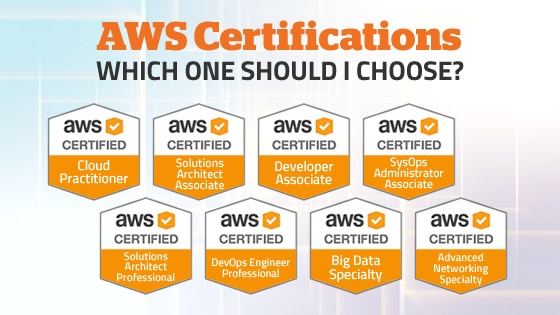Prerequisites:-
This hands on training course explores for solution designer and solution architect in AWS Cloud
This course includes :-
AWS Certified Solutions Architect Training is an advanced course designed for students who have associate level solutions architect certification and have a working knowledge of AWS. This training will help you develop professional level expertise in cloud architecture and applications. It will enable you to develop master level skills to design and deploy reliable and scalable applications on the AWS cloud platform. The AWS Certified Solutions Architect Certification is the best Cloud Certification offered in past years. Our program is designed to train you on the major components in AWS technology and will prepare you for the professional level AWS Certified Solutions Architect exam.
Module 1:
Course Introduction
Introduction to AWSIntroduction to the AWS products
Regions and Availability Zones
Signing up for AWS
AWS Free usage tier
Introduction AWS management console
Module 2:
EC2 Instances
Understanding AMILaunching your first AWS instance
On-demand Instance pricing
Reserved Instance pricing
Spot instance pricing
Setting up security
Security groups
Choosing the AMI
Creating a new AMI
IP Addressing Scheme
Public and Private IP’s
Deploying a new instance from the created AMI
Key Pairs
Elastic IP’s
Module 3:
Creating Virtual Machines
Introduce virtual machinesVirtual machine hardware
Virtual machine files
Create and work with virtual machines and templates
Module 4:
ELB (Elastic Load Balancer)
Introduction to ELBBasic ELB concepts
Internet-facing ELB
VPC – facing ELB
Create an ELB (Elastic Load Balancer)
Adding and removing instances on ELB
Module 5:
EBS (Elastic Block Storage)
Create EBS volumesDelete EBS Volumes
Attach and detach EBS volumes
Mounting and un-mounting EBS volume
Creating and deleting snapshots
Creating volumes from snapshots
Module 6:
Cloud Watch
Cloud watch dashboardConfiguring Monitoring services
Setting thresholds
Configuring actions
Creating a cloud watch alarm
Getting statistics for EC2 instances
Monitoring other AWS services
Configuring Notifications
Integrating cloud watch with Auto scaling
Module 7:
Simple Notification Service (SNS)
What is SNS?Creating a topic
Create subscription
SES (Simple Email Services)
SQS (Simple Queue Service)
Subscribed to the subscription (SQS, Email, Email-Json, SMS, HTTP, HTPPS, Application)
Module 8:
Auto scaling
Horizontal vs. vertical scalingBoot strapping
Create a launch configuration
Create an Auto Scaling group
Create a policy for your Auto Scaling group
Set up an auto-scaled, load-balanced Amazon EC2 application
Module 9:
Identity access management (IAM)
Creating Users and GroupsApplying policies
Password Policy
Roles
Command line management
Module 10:
Elastic Beanstalk
Creating environmentApplication versioning
Deploying a sample app
What is S3?
RRS (Reduced Redundancy storage)
S3 durability and redundancy
S3 Buckets
S3 Uploading Downloading
S3 Permissions
S3 Object Versioning
S3 Lifecycle Policies
Glacier Storage
Module 11:
Route53
Creating zonesHosting a website
Understanding routing policies
Weighted simple and failover policies
Module 12:
Relational Database Service (RDS)
Selecting the Database typeConfiguring the database
Creating database
Configuring backups
Configuring the maintenance windows
Connecting to the database
Module 13:
Cloud Formation
What is cloud formation?Deploying template
Create Stack
Delete Stack
Provisioning application resources with Cloud Formation
Module 14:
Cloud Front
Use of cloud frontCreating a cloud front distribution
Hosting a website of cloud front distribution
Implementing restrictions
Configuring origins and behaviours
CDN (Content Delivery Network)
Module 15:
Amazon Virtual Private Cloud (VPC)
What is VPC?VPC configuration
VPC security
Elastic IP’s
Inbound and outbound ACL’s
Dynamo DB
Creating a Dynamo db
Configuring alarms
Adding data manually
Module 16:
AWS troubleshooting
Troubleshooting EC2 instancesTroubleshooting using Cloud Watch
Troubleshooting using ELB
Using Cloud Trail
Module 17:
Trusted Advisor
Cost OptimizationPerformance
Security
Fault Tolerance


